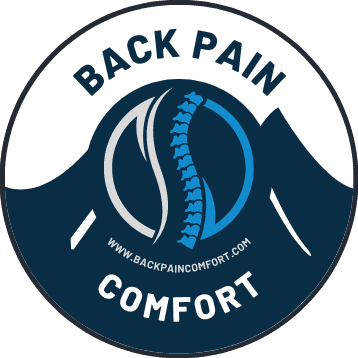
In a world that constantly buzzes about the latest health trends, the importance of back health is often overlooked. Yet, the way we feed our body has a direct influence on the backbone of our existence—quite literally! What if I told you that your plate of food could be the hidden key to a pain-free and robust back? Let’s dive deep into the world of diet and nutrition to discover how these elements contribute to a strong and healthy spine.
Weight Management: Lightening the Load
A balanced diet plays an instrumental role in maintaining an ideal weight. Excess weight, especially around the abdominal region, exerts undue pressure on the spine, causing strain and potential pain. Consuming nutrient-rich foods, low in empty calories, can assist in preventing weight gain, thereby reducing the strain on your back.
Anti-inflammatory Foods: Nature’s Painkillers
Certain foods have natural anti-inflammatory properties. Ingredients like turmeric, ginger, blueberries, and green tea can combat inflammation. Chronic inflammation can lead to back pain, so integrating these ingredients into your meals can act as a preventive measure against discomfort.
Bone Strength: The Calcium and Vitamin D Duo
Our spine is a continuous column of bones that require nourishment. Calcium aids in strengthening these bones, while Vitamin D ensures calcium’s proper absorption. Dairy products, fortified foods, and leafy greens offer a rich dose of calcium, whereas sunlight and fatty fish can be your best bets for Vitamin D.
Muscular Support: The Role of Protein
Around the spine are intricate muscles that support and facilitate movement. For these muscles to function optimally, they need protein. Include sources like lean meat, fish, beans, tofu, and dairy in your diet. These not only support muscle health but also aid in repair after wear and tear.
Hydration: The Spinal Cushion
Between the vertebrae in our spine lie discs filled with a jelly-like substance. These discs act as cushions, preventing bones from rubbing against each other. Staying hydrated maintains the health and function of these discs. Drinking plenty of water ensures these cushions remain effective, thus preventing conditions like disc herniation.

Omega-3 Fatty Acids: Boosting Joint Health
Present in foods like flaxseeds, walnuts, and fish, Omega-3 fatty acids possess anti-inflammatory properties. They play an essential role in maintaining joint health, including the facet joints in our spine. A diet rich in Omega-3s can help alleviate back pain symptoms and prevent their onset.
Antioxidant Powerhouse: Combatting Free Radicals
Our bodies are constantly under attack by free radicals—unstable molecules that can damage cells, including those in our spine and back muscles. Antioxidants neutralize these harmful molecules. Foods rich in antioxidants, such as berries, nuts, dark chocolate, and spinach, can protect the cells of our back from potential damage, promoting overall back health.
Magnesium Magic: Muscle Relaxation
Muscle spasms or cramps around the back can be quite painful. Magnesium, an essential mineral, is known for its muscle-relaxing properties. It can aid in preventing and alleviating muscle tension in the back. Foods like avocados, bananas, legumes, and whole grains are excellent sources of magnesium.
Fiber First: Maintaining Digestive Health
A lesser-known fact is that chronic constipation can lead to lower back pain. A build-up in the intestines can exert pressure on the surrounding areas, including the lower back. Consuming a diet rich in fiber—found in fruits, vegetables, whole grains, and legumes—ensures regular bowel movements and may indirectly contribute to back health.

Vitamin C: Collagen Production for Tissues
The tissues and ligaments around our spine and back need collagen for strength and flexibility. Vitamin C is vital for collagen production. Including foods like oranges, strawberries, bell peppers, and broccoli in your diet can bolster the health and durability of your back’s supportive tissues.
Conclusion
The journey to a healthy back doesn’t begin in the gym, nor does it start at a physiotherapist’s office. It starts right in our kitchens and dining tables. By understanding the vital connection between what we eat and how our back feels, we equip ourselves with the knowledge to make informed choices for our health. Remember, a balanced plate not only nurtures the body but also fortifies the very pillar that holds us upright—our spine. Eat wisely, and let your back bask in the strength of good nutrition.






